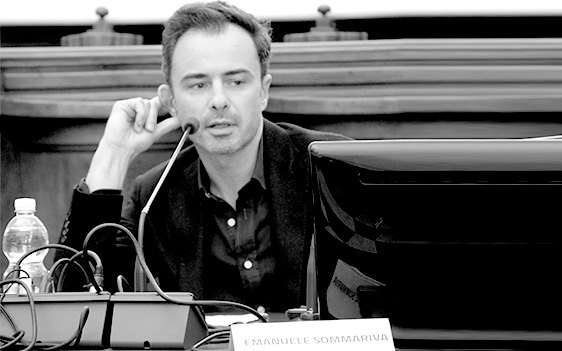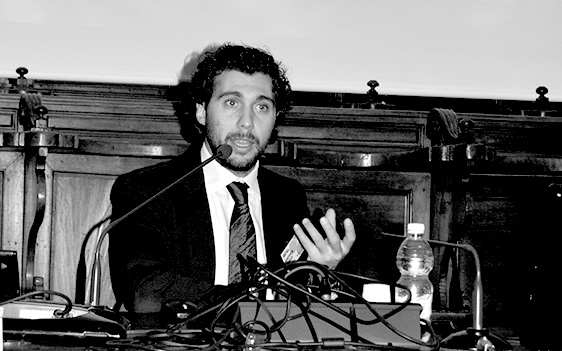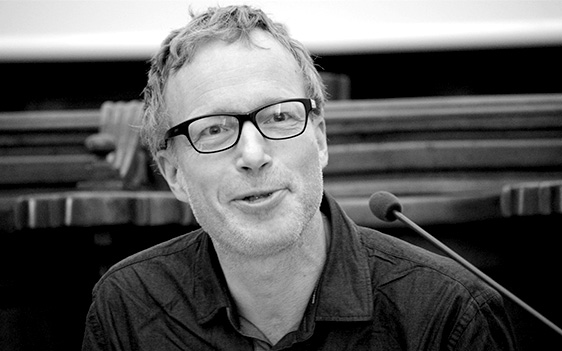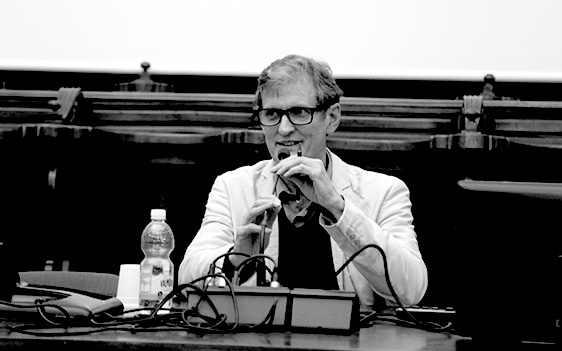
PLANNING/LANDING Infra-Structure
Going through images and projects I will show you the research we made for an exhibition held at the Cité de l’Architeture et du Patrimoine, in Paris, where we rediscovered how deeply mankind has changed the face of Earth.
Earth is an architecture. It is our world and our heritage. You can see the world as a big building.
Mankind wanted to be a god on Earth. Sometimes a single gesture, a single idea has expressed its power all over a wide territory. How an idea could be so powerful? Different constructions, from the Ziggurat to the HKG airport, explain this. May be it’s no more the time for those huge transformations, but it is time to use what we have already built, to see what’s good in the previous generation of buildings. Moreover, it is important to see the signs of the history on the buildings as a preview of how they could be used in the future.
Let’s take for example a very banal building. What can be interesting in such a banal building? I think that if you achieve to make extraordinary a banal thing, then you make a step ahead.
If Earth is an infrastructure, because it contains time, I think it’s time for us to try to design and understand good infrastructures. A good infrastructure is a structure that contains time, where it is possible to see what was before. It’s at the same time something that precedes architecture and something that follows architecture. So it is imperative to show what preceded architecture and what will happen after. If we’re trying to design a good infrastructure, we need to think about the structure and about uses and people. It’s a social act: everything in this matter is a social act. This research crosses therefore essential topics, which are sometimes neglected in the contemporary city, such as the potential of architecture determined by other factors, the role of large modern infrastructures, the status of monumentality, or the environmental condition in the metropolitan context.
Before planning anything you must know very well the existing conditions.
The redevelopment of Place de la Republique is based on the concept of a scene open to multiple urban uses. The point was to keep the horizontality, the sight, creating meanwhile a pleasant place. The new square makes a large-scale landscape that transforms it into a metropolitan equipment: a ‘supesurface’ of evolution available and suitable. Generous by its dimensions and popular by its history, the Place de la Republique becomes a new center of attraction, exchanges, encounters. The southwest part hosts a pavilion, a unique building, entirely glazed, to keep a continuous reading of this singular space.
I think that landscape links together two aspects, site and program, and infrastructure can be both the two.
An infrastructure has the ability to destroy a site, but also to make new a site. We have been working on Péripherique de Paris for more than 15 years. As I used to tell my students: you have to know highway related to building and apartments, you have to understand the structure and the changing uses. Sometimes infrastructure remains but uses change. This was built in 1850, in the industrial era. Someday the cars won’t be the same, the uses will changes and we have to imagine how. We also worked on the E40 highway, one of the main entrances to Brussels (from ‘60-‘70). The project aims to upgrade the image of the eastern entrance of the city through its transformation and urban and landscape integration. Our strategy was working with scenarios.
A scenario is an evolving story.
Two principles guide the vision of the project. On the one hand, the metropolitan monument dimension of infrastructure invites to exploit this ‘supersurface’ as an extraordinary resource. On the other hand, this search for the potential of the highway goes with a desire for a radical economy of recycling. Once the highway and its mobility are transformed, its habitability conditions evolve. Rethinking the E40 as a truly public place accessible to all and reconfiguring its surroundings shows that an alliance is possible between infrastructure and nature. Public space is something that leads us to the essence of a place, of being somewhere and looking at not only what is built by man but what man is adding to this Earth.
Pierre Alain Trévelo
TVK
TVK – Trévelo& Viger-Kohler
Founded in Paris in 2003 and employingaround 35 people, TVK is a Paris-basedinternationalarchitecture and urban design practicecreated in 2003 by Pierre Alain Trévelo and Antoine Viger-Kohler. TVK focusesprimarily on the question of building the city and the metropolis. “We are interested in the question of the construction in time. The construction of the city and of the metropolis in time. The aim of ourresearchis to seize the complexity and paradoxical nature of the contemporary city in order to continue itsconstruction. Thisresearchcrossesthereforeessentialtopics, which are sometimesneglected in the contemporary city; suchas the potential of architecture in locationsdetermined by otherfactors, the role of large moderninfrastructures, the status of monumentality, or the environmentalcondition in the metropolitancontext. Architects can no doubt play their part in the construction of a collective culture of metropolitanmetamorphoses. With no aesthetic or moral preconceptions, we are dailytrying to identify the transitions of adolescentcitiestowards a stillunknownurban era.”
CURRICULUM
Educated in architecture and urbanismmainly in Paris and Harvard, Pierre Alain Trévelopursues a theoritical and build work throughprojects, research and writings. TVK bringstogether the twofoundingmembers of TOMATO Architectesgroupthatproduced the book, Paris, La Ville duPéripherique (Paris: The ring road city), published by Le Moniteur in 2003. Sincethen, the office hascontinueditseditorialactivity with the release of No Limit. Etudeprospective de l’insertionurbaineduperipherique de Paris (No Limit. ProspectiveStudy of Urban Integration of the Paris Ring Road), published by Pavillon de l’Arsenal in 2008 and around self-publishededitorialprojectslike the book SystèmeOuvert, lesnouveauxmondesduGrand Paris for the Atelier International duGrand Paris or the monographiccollection TAKE.



